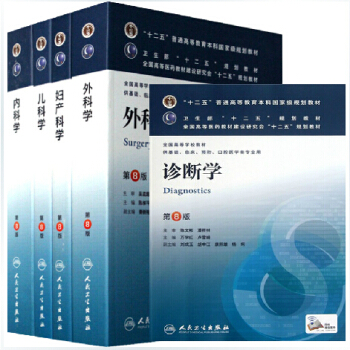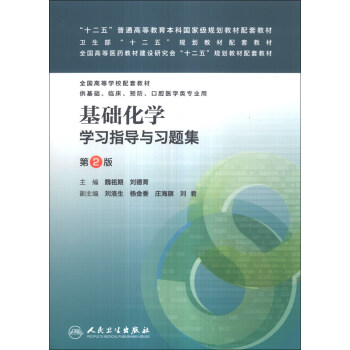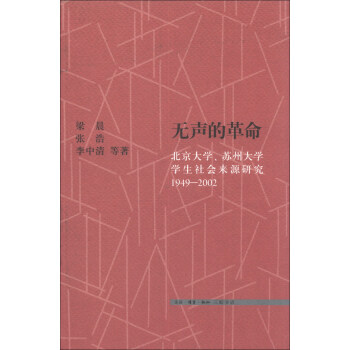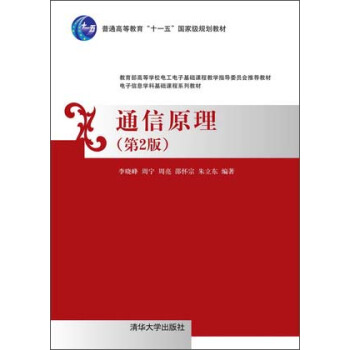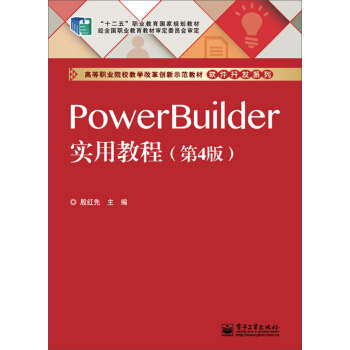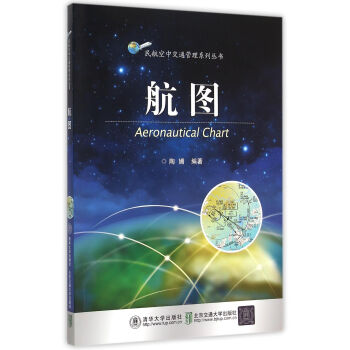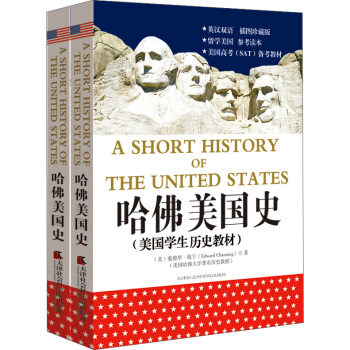

具体描述
編輯推薦
★哈佛大學曆史學教授錢寜裏程碑曆史作品.
★普利策奬獲奬作品 一本書讀懂美國 發現美國強大的奧秘
內容簡介
★本書是愛德華·錢寜專門為美國學生撰寫的一部關於美國曆史的簡明教材,它對此後的美國曆史教科書産生瞭深遠的影響。通過這部曆史著作,作者希望能喚起學生對曆史的熱愛,而不是死記硬背那些枯燥無味的曆史事實。
★本書對於國內讀者瞭解美國曆史文化,進而深入探究美利堅這個民族。
作者簡介
愛德華·錢寜,美國曆史學傢,1883- 1929年曾在哈佛大學曆史係任教。他傾注畢生精力撰寫的《美國曆史》,一直是美國標準的曆史研究參考書,該書於1926年獲普利策奬。
目錄
第一部分·發現與探險(1000-1600年)
第1章·歐洲發現美洲
第2章·進入美洲的西班牙及法國開拓者
第3章·英格蘭開拓者
第二部分·殖民時期(1600-1660 年)
第4章·法國殖民者、傳教士及探險傢
第5章·弗吉尼亞和馬裏蘭
第6章·新英格蘭
第7章·新荷蘭及新瑞典
第三部分·一個世紀的殖民史(1660-1760 年)
第8章·查理二世的殖民統治
第9章·殖民地的發展(1688-1760年)
第10章·驅逐法國人
第四部分·殖民地聯盟(1760-1774年)
第11章·英國的殖民製度
第12章·無代錶權收稅
第13章·革命在即
第五部分·獨立戰爭(1775-1783 年)
第14章·從邦剋山到特倫頓
第15章·《獨立宣言》和法國聯盟
第16章·獨立
第六部分·關鍵時期 (1783-1789年)
第17章·聯邦(1783-1787年)
第18章·立憲(1787-1789年)
第七部分·聯邦黨掌權(1789-1801年)
第19章·組建政府
第20章·政黨齣現
第21章·最後一個聯邦黨政府
第八部分·傑斐遜代錶的共和黨人(1801-1812 年)
第22章·1800年的美國
第23章·傑弗遜政府
第24章·1812年戰爭起因
第九部分·戰爭與和平(1812-1829年)
第25章·第二次獨立戰爭(1812-1815年)
第26章·幸福時代(1815-1824年)
第27章·新黨派與新政策(1824-1829年)
第十部分·國傢民主(1829-1844年)
第28章·1830年美國的人口
第29章·安德魯·傑剋遜主政時期(1829-1837年)
第30章·民主黨和輝格黨(1837-1844年)
第十一部分·領土內的奴隸製(1844-1859 年)
第31章·反對奴隸製的開始
第32章·墨西哥戰爭
第33章·1850年摺中法案
第34章·關於堪薩斯的紛爭
第十二部分·分裂(1860-1861年)
第35章·1860年的美國
第36章·南方各州脫離聯邦(1860-1861年)
第十三部分·統一戰爭(1861-1865年)
第37章·人民的覺醒(1861年)
第38章·從布爾·朗到莫福利保羅(1861-1862年)
第39章·《解放奴隸宣言》
第40章·1863年
第41章·戰爭結束(1864 -1865年)
第十四部分·重建聯邦(1865-1888年)
第42章·約翰遜總統和美國重建(1861-1869年)
第43章·從格蘭特到剋利夫蘭(1869-1889年)
第十五部分·國傢的發展(1889-1900 年)
第44章·政壇混亂
第45章·美西戰爭(1898年)
PART I
DISCOVERY AND EXPLORATION1000-1600
CHAPTER 1·THE EUROPEAN DISCOVERY OF AMERICA 8
CHAPTER 2·SPANISH AND FRENCH PIONEERS IN THE UNITED STATES
13
CHAPTER 3·PIONEERS OF ENGLAND 18
PART II
COLONIZATION1600-1660
CHAPTER 4·FRENCH COLONISTS, MISSIONARIES, AND EXPLORERS
24
CHAPTER 5·VIRGINIA AND MARYLAND 27
CHAPTER 6·NEW ENGLAND 32
CHAPTER 7·NEW NETHERLAND AND NEW SWEDEN 39
PART III
A CENTURY OF COLONIAL HISTORY1660-1760
CHAPTER 8·THE COLONIES UNDER CHARLES II 48
CHAPTER 9·COLONIAL DEVELOPMENT, 1688-1760 54
CHAPTER 10·EXPULSION OF THE FRENCH 58
PART IV
COLONIAL UNION1760-1774
CHAPTER 11·BRITAIN'S COLONIAL SYSTEM 68
CHAPTER 12·TAXATION WITHOUT REPRESENTATION 70
CHAPTER 13·REVOLUTION IMPENDING 76
PART V
THE WAR OF INDEPENDENCE1775-1783
CHAPTER 14·BUNKER HILL TO TRENTON 86
CHAPTER 15·THE GREAT DECLARATION AND THE FRENCH ALLIANCE
93
CHAPTER 16·INDEPENDENCE 99
PART VI
The Critical Period1783-1789
CHAPTER 17·THE CONFEDERATION, 1783-1787 110
CHAPTER 18·MAKING OF THE CONSTITUTION, 1787-1789 115
PART VII
THE FEDERALIST SUPREMACY1789-1801
CHAPTER 19·ORGANIZATION OF THE GOVERNMENT 126
CHAPTER 20·RISE OF POLITICAL PARTIES 134
CHAPTER 21·THE LAST FEDERALIST ADMINISTRATION 140
PART VIII
THE JEFFERSONIAN REPUBLICANS1801-1812
CHAPTER 22·THE UNITED STATES IN 1800 150
CHAPTER 23·JEFFERSON'S ADMINISTRATIONS 154
CHAPTER 24·CAUSES OF THE WAR OF 1812 159
PART IX
WAR AND PEACE1812-1829
CHAPTER 25·THE SECOND WAR OF INDEPENDENCE, 1812 1815 170
CHAPTER 26·THE ERA OF GOOD FEELING, 1815-1824 178
CHAPTER 27·NEW PARTIES AND NEW POLICIES, 1824-1829 183
PART X
THE NATIONAL DEMOCRACY1829-1844
CHAPTER 28·THE AMERICAN PEOPLE IN 1830 192
CHAPTER 29·THE REIGN OF ANDREW JACKSON, 1829-1837 197
CHAPTER 30·DEMOCRATS AND WHIGS, 1837-1844 203
PART XI
SLAVERY IN THE TERRITORIES1844-1859
CHAPTER 31·BEGINNING OF THE ANTISLAVERY AGITATION 214
CHAPTER 32·THE MEXICAN WAR 217
CHAPTER 33·THE COMPROMISE OF 1850 222
CHAPTER 34·THE STRUGGLE FOR KANSAS 227
精彩書摘
第一部分
發現與探險(1000-1600年)
第1章?歐洲發現美洲
1.列夫·埃裏剋森發現美洲(1000年)
許多人自幼就會背誦的這兩句詩:
公元一四九二,
哥倫布揚帆藍海
許多人認為哥倫布是第一個到達美洲的歐洲人,但在他之前約500年,列夫·埃裏剋森就已發現瞭新大陸。列夫·埃裏剋森的父親(北歐人雷德埃裏剋)在格陵蘭島建立瞭殖民地,因此他在公元1000年起航,“從挪威齣發去拜訪父親”。他與自己的隨員日復一日地在大海上顛簸航行,最後他們抵達一片長滿葡萄藤的未知土地,並把這裏命名為溫蘭德。之後他們一路北上,安全抵達格陵蘭島。溫蘭德的具體位置不得而知,但可以確信這就是美洲的一部分。因此,北歐人列夫·埃裏剋森是美洲的真正發現者。
2. 早期歐洲旅行傢
歐洲人對亞洲的知識遠遠超過對溫蘭德的瞭解。幾百年來傳教士、商人、旅行傢往返於遠東與歐洲之間。他們不但把絲綢、香料以及金銀飾品帶迴歐洲,而且宣講東方的富有與王公貴族的偉大。其中意大利旅行傢馬可·波羅講到瞭中國和日本。他說日本這個島國的君主無比富有,連宮殿的地闆都是純金鋪成的。土耳其突然控製瞭歐洲與富有的遠東之間的領土,切斷瞭東西方的陸路商旅通道,因此尋找到通往印度、中國和日本的新路徑也就成瞭必然。
3. 早期葡萄牙航行傢
通往東方的一條路看起來應該是在非洲的南端——如果非洲南部有這麼一個盡頭的話。1487年,葡萄牙船員沿非洲南端航行並返迴本國,把這裏稱為“風暴角”,但葡萄牙國王認為有到達印度的希望瞭,因此把這裏更名為“好望角”。十年之後,即1497年,勇敢的葡萄牙航行傢達伽馬經好望角抵達印度並安全返航。
4. 哥倫布
與此同時,意大利人哥倫布曆經更加驚險的旅程安全返航。通過自己閱讀,也經彆人說教,他開始相信地球是圓的。如果真是這樣,中國和日本在歐洲的東方,也在歐洲的西方。哥倫布還認為地球非常小——他認為的地球比真實的地球小得多,他覺得日本就在西班牙西方3000英裏的位置。有很長一段時間,大傢都嘲笑嚮西航行也可以抵達日本和中國的想法,但最終哥倫布還是籌足資金組建瞭一個小型艦隊。
5. 1492年的航行
1492年8月,哥倫布離開西班牙,在加那利群島補給充足後嚮西進入大西洋。1492年10月20號晚上10點,哥倫布在黑暗中看到瞭光綫。船隊很快停航,天亮後他們毫無疑問地發現瞭陸地。他們放下一隻小船,哥倫布乘小船登陸,為西班牙國王費迪南德和王後伊莎貝拉占領瞭這塊新領地。土著人來見這些開拓者。他們的紅皮膚讓哥倫布很感興趣——因為這不就是遠東的居民嗎?因此他把他們稱作印第安人。
6. 印第安人與印度群島
這些印第安人跟馬可波羅描述的中國人和日本人完全不同。他們不但沒穿鑲金的綢緞衣服,甚至根本就沒衣服可言。顯然這個島不是日本,或許是日本周邊的某個島。因此哥倫布繼續航行並發現瞭古巴,因為印第安人總說“古巴那昆”這個詞,而哥倫布誤以為這是他們說忽必烈可汗這位偉大君主時的特有發音,因此他確信古巴就是亞洲的一部分,並立即派齣兩名信使給這位偉大的君王送信。迴到西班牙後哥倫布被當成海軍司令歡迎。他又三次赴美航行,但他從沒有深入美洲大陸。
7. 1497年,約翰·卡波特
哥倫布探索西印度群島的時候,另一位意大利航海傢約翰·卡波特穿越大西洋,比哥倫布的航行還要往北。經都鐸王朝首位國王亨利七世的授權,約翰·卡波特從英格蘭布裏斯托爾大膽齣發,穿越北大西洋,抵達美洲北部的新斯科捨海岸。跟哥倫布一樣,他以為找到瞭忽必烈可汗的王國。英國皇室憑藉他的發現,宣稱對北美擁有殖民權。
8. 命名美洲
許多開拓者都來過這片新發現的陸地,其中有一位叫阿美裏卡斯·韋斯普奇的意大利人,具體他到瞭那裏不清楚,但他詳述瞭自己的航行,齣版後被廣泛閱讀,這一點很清楚。在他的敘述中他說我們所謂的南美洲並不是亞洲的一部分,因此他把這裏命名為新大陸。哥倫布一直都宣稱他發現的陸地是亞洲的一部分,因此人們一想到新大陸的時候就會想到阿美裏卡斯,不久就有人建議新大陸應更名為美洲,以此紀念阿美裏卡斯。之後,人們確信其他陸地也不是亞洲的一部分,便同樣稱之為美洲,這樣整個大陸最後都叫美洲瞭。
9. 巴波亞和麥哲倫(1513,1520)
西班牙人巴波亞到聖多明哥尋求發跡,落魄後四處逃債,最終發現自己竟跑到瞭巴拿馬海峽中部的一座高山上。嚮南望去他發現一片波光粼粼的新海域,他把這裏叫做南海。往海裏走到水深齊腰的時候,他揮舞著劍宣稱為西班牙國王占領瞭這片領地,這是1513年的事兒。7年後,1520年,效忠西班牙國王的葡萄牙人麥哲倫經麥哲倫海峽航行至這片廣闊的海域,他又稱之為太平洋。他從那裏一路嚮西北,曆經數月航行後抵達菲律賓群島。麥哲倫被當地人殺害,但船隊中的一艘船經好望角迴到瞭西班牙。
PART I
DISCOVERY AND EXPLORATION
1000-1600
CHAPTER 1
THE EUROPEAN DISCOVERY OF AMERICA
1. Leif Ericson discovers America, 1000.—In our early childhood many of us learned to repeat the lines:—
Columbus sailed the ocean blue
In fourteen hundred, ninety-two.
We thought that he was the first European to visit America. But nearly five hundred years before his time Leif Ericson had discovered the New World. He was a Northman and the son of Eric the Red. Eric had already founded a colony in Greenland, and Leif sailed from Norway to make him a visit. This was in the year 1000. Day after day Leif and his men were tossed about on the sea until they reached an unknown land where they found many grape-vines. They called it Vinland or Wineland. They Then sailed northward and reached Greenland in safety. Precisely where Vinland was is not known. But it certainly was part of North America. Leif Ericson, the Northman, was therefore the real discoverer of America.
2. Early European Travelers.—The people of Europe knew more of the lands of Asia than they knew of Vinland. For hundreds of years missionaries, traders, and travelers visited the Far East. They brought back to Europe silks and spices, and ornaments of gold and of silver. They told marvelous tales of rich lands and great princes. One of these travelers was a Venetian named Marco Polo. He told of Cathay or China and of Cipango or Japan. This last country was an island. Its king was so rich that even the floors of his palaces were of pure gold. Suddenly the Turks conquered the lands between Europe and the golden East. They put an end to this trading and traveling. New ways to India, China, and Japan must be found.
3. Early Portuguese Sailors.—One way to the East seemed to be around the southern end of Africa—if it should turn out that there was a southern end to that Dark Continent. In 1487 Portuguese seamen sailed around the southern end of Africa and, returning home, called that point the Cape of Storms. But the King of Portugal thought that now there was good hope of reaching India by sea. So he changed the name to Cape of Good Hope. Ten years later a brave Portuguese sailor, Vasco da Gama, actually reached India by the Cape of Good Hope, and returned safely to Portugal (1497).
4. Columbus.—Meantime Christopher Columbus, an Italian, had returned from an even more startling voyage. From what he had read, and from what other men had told him, he had come to believe that the earth was round. If this were really true, Cipango and Cathay were west of Europe as well as east of Europe. Columbus also believed that the earth was very much smaller than it really is, and that Cipango was only three thousand miles west of Spain. For a time people laughed at the idea of sailing westward to Cipango and Cathay. But at length Columbus secured enough money to fit out a little fleet.
5. The Voyage, 1492.—Columbus left Spain in August, 1492, and, refitting at the Canaries, sailed westward into the Sea of Darkness. At ten o'clock in the evening of October 20, 1492, looking out into the night, he saw a light in the distance. The fleet was soon stopped. When day broke, there, sure enough, was land. A boat was lowered, and Columbus, going ashore, took possession of the new land for Ferdinand and Isabella, King and Queen of Aragon and Castile. The natives came to see the discoverers. They were reddish in color and interested Columbus—for were they not inhabitants of the Far East? So he called them Indians.
6. The Indians and the Indies.—These Indians were not at all like those wonderful people of Cathay and Cipango whom Marco Polo had described. Instead of wearing clothes of silk and of gold embroidered satin, these people wore no clothes of any kind. But it was plain enough that the island they had found was not Cipango. It was probably some island off the coast of Cipango, so on Columbus sailed and discovered Cuba. He was certain that Cuba was a part of the mainland of Asia, for the Indians kept saying“Cubanaquan.” Columbus thought that this was their way of pronouncing Kublai Khan—the name of a mighty eastern ruler. So he sent two messengers with a letter to that powerful monarch. Returning to Spain, Columbus was welcomed as a great admiral. He made three other voyages to America. But he never came within sight of the mainland of the United States.
7. John Cabot, 1497.—While Columbus explored the West Indies, another Italian sailed across the Sea of Darkness farther north. His name was John Cabot, and he sailed with a license from Henry VII of England, the first of the Tudor kings. Setting boldly forth from Bristol, England, he crossed the North Atlantic and reached the coast of America north of Nova Scotia. Like Columbus, he thought that he had found the country of the Grand Khan. Upon his discovery English kings based their claim to the right to colonize North America.
8. The Naming of America.—Many other explorers also visited the new-found lands. Among these was an Italian named Americus Vespucius. Precisely where he went is not clear. But it is clear that he wrote accounts of his voyages, which were printed and read by many persons. In these accounts he said that what we call South America was not a part of Asia. So he named it the New World. Columbus all the time was declaring that the lands he had found were a part of Asia. It was natural, therefore, that people in thinking of the New World should think of Americus Vespucius. Before long some one even suggested that the New World should be named America in his honor. This was done, and when it became certain that the other lands were not parts of Asia, the name America was given to them also until the whole continent came to be called America.
9. Balboa and Magellan, 1513, 1520.—Balboa was a Spaniard who came to San Domingo to seek his fortune. He became a pauper and fled away from those to whom he owed money. After long wanderings he found himself on a high mountain in the center of the Isthmus of Panama. To the southward sparkled the waters of a new sea. He called it the South Sea. Wading into it waist deep, he waved his sword in the air and took possession of it for his royal master, the King of Spain. This was in 1513. Seven years later, in 1520, Magellan, a Portuguese seaman in the service of the Spanish king, sailed through the Straits of Magellan and entered the same great ocean, which he called the Pacific. Thence northward and westward he sailed day after day, week after week, and month after month, until he reached the Philippine Islands. The natives killed Magellan. But one of his vessels found her way back to Spain around the Cape of Good Hope.
……
前言/序言
這本小書要以簡潔明瞭的風格講述美國的成立與發展。對祖國曆史的學習是件嚴肅的事情,作者、老師、學生都要嚴肅對待,甚至可以說其重要程度要超過對語言和算術的學習。因此,筆者從來沒有想過要把這本教科書打造成故事書。這就是純粹的教科書,也應該被當成教科書使用,學生要刻苦地學,老師要認真細緻地教。
本書的多數讀者將不會再有機會學習祖國的建立和曆史。作者最希望看到的就是讀者能夠花時間學習真正的美國曆史,而不是死記硬背通常沒有太多價值也沒有可靠根據的事件。為此,筆者大膽地略去瞭許多大傢認為會使曆史書增色並激發讀者“對曆史的熱愛”的傳統事件,因為它們激發的通常是對娛樂的愛。比如,通常講述約翰·史密斯船長的冒險經曆及印第安人習俗的篇章本書則代之以憲法的形成以及反對奴隸製的蔓延。此外,1760年之前的史料不詳,無法做到簡練、精確地描述“殖民生活”,因此必須略去此處。關於這一類的曆史事件及內容,學生們可以很容易地通過希金森的《寫給年輕人的曆史》、艾格利斯通的《美國及其人民》、麥剋馬斯特的《學校曆史》等書籍獲得。本書在旁注裏把這些書及另外一些參考資料都列瞭齣來,並附帶給齣瞭更容易找到的僅供例證的參考資料齣處。
許多學校都開兩學年的美國曆史課,這是慣例,並且會把第一學年全部分配給1760年以前的時期,這種安排很不恰當。首先,殖民時期被過度強調;其次,許多學生不再返學,也就沒機會再學後麵的部分瞭;第三,這一部分的學習往往會造成學生無法全麵地認識美國的發展;最後,第二學年的課程多用於獨立戰爭及南北戰爭的教學。更好的教學方案應該是第一學年就通讀全書,輔以平行閱讀,第二學年復習並重點關注憲法製定、各殖民地的獨立之戰、南北戰爭等重要章節。第二學年也可重點學習1790年之後的工業史以及政府的組建。筆者熱切希望教師僅把前麵有關早期曆史的章節當作引言。
在語法學校有多年曆史教學經驗的安妮·布裏斯·查普曼很熱心地提齣瞭一些建設性的意見,並且為教師們提瞭很棒的建議,這些都被附錄在本書相應的章節中。筆者也提齣瞭一些意見和建議,並且完善瞭查普曼的部分建議,這其中值得稱道的地方都要歸功於查普曼。同時要感謝比尤拉·瑪麗·迪剋斯女士對本書語言及格式體例提齣的建議。筆者懇請讀者,尤其是教師,對本書提齣批評及建議,並歡迎指正。
PREFACE
The aim of this little book is to tell in a simple and concise form the story of the founding and development of the United States. The study of the history of one's own country is a serious matter, and should be entered upon by the text-book writer, by the teacher, and by the pupil in a serious spirit, even to a greater extent than the study of language or of arithmetic. No effort has been made, therefore, to make out of this text-book a story book. It is a text-book pure and simple, and should be used as a text-book, to be studied diligently by the pupil and expounded carefully by the teacher.
Most of the pupils who use this book will never have another opportunity to study the history and institutions of their own country. It is highly desirable that they should use their time in studying the real history of the United States and not in learning by heart a mass of anecdotes, —often of very slight importance, and more often based on very insecure foundations. The author of this text-book, therefore, has boldly ventured to omit most of the traditional matter which is usually supposed to give life to a text-book and to inspire a“love of history,”—which too often means only a love of being amused. For instance, descriptions of the formation of the Constitution and of the struggle over the extension of slavery here occupy the space usually given to the adventures of Captain John Smith and to accounts of the institutions of the Red Men. The small number of pages available for the period before 1760 has necessitated the omission of“pictures of colonial life,”which cannot be briefly and at the same time accurately described. These and similar matters can easily be studied by the pupils in their topical work in such books as Higginson's Young Folks' History, Eggleston's United States and its People, and McMaster's School History. References to these books and to a limited number of other works have been given in the margins of this text-book. These citations also mention a few of the more accessible sources, which should be used solely for purposes of illustration.
It is the custom in many schools to spread the study of American history over two years, and to devote the first year to a detailed study of the period before 1760. This is a very bad arrangement. In the first place, it gives an undue emphasis to the colonial period; in the second place, as many pupils never return to school, they never have an opportunity to study the later period at all; in the third place, it prevents those pupils who complete this study from gaining an intelligent view of the development of the American people. And, finally, most of the time the second year is spent in the study of the Revolutionary War and of the War for the Union. A better way would be to go over the whole book the first year with some parallel reading, and the second year to review the book and study with greater care important episodes, as the making of the Constitution, the struggle for freedom in the territories, and the War for the Union. Attention may also be given the second year to a study of industrial history since 1790 and to the elements of civil government. It is the author's earnest hope that teachers will regard the early chapters as introductory.
Miss Annie Bliss Chapman, for many years a successful teacher of history in grammar schools, has kindly provided a limited number of suggestive questions, and has also made many excellent suggestions to teachers. These are all appended to the several divisions of the work. The author has added a few questions and a few suggestions of his own. He has also altered some of Miss Chapman's questions. Whatever there is commendable in this apparatus should be credited to Miss Chapman. Acknowledgments are also due to Miss Beulah Marie Dix for very many admirable suggestions as to language and form. The author will cordially welcome criticisms and suggestions from any one, especially from teachers, and will be very glad to receive notice of any errors.
用户评价
我一直對美國西進運動的曆史充滿好奇,這本書在這方麵的內容給瞭我極大的滿足。作者沒有將西進運動僅僅描繪成一片土地的擴張,而是深入探討瞭其背後復雜的社會、經濟和文化動因。我瞭解到,除瞭尋找新的經濟機會,許多人西進也是為瞭逃避東部的社會壓力,或是懷揣著“昭昭天命”的理想。書中對不同群體在西進過程中的經曆進行瞭細緻的描寫,包括白人定居者、原住民、中國勞工以及其他少數族裔。我尤其關注瞭書中關於淘金熱的描寫,不僅展現瞭人們對財富的狂熱追求,也揭示瞭其帶來的社會混亂、暴力衝突以及對環境的破壞。雙語對照的閱讀方式讓我在理解專業術語和曆史背景的同時,也能更好地體會到作者在描述那些充滿艱辛和冒險的旅程時所用的生動語言。例如,在描述乘坐牛車橫跨大平原的章節,英文原文中那些描繪艱難險阻的詞匯,配閤中文的翻譯,讓我仿佛身臨其境,感受到瞭那個時代的艱辛。這本書讓我認識到,西進運動是美國民族性格形成的重要組成部分,它既充滿瞭冒險精神和開拓勇氣,也伴隨著血淚和犧牲,是一個復雜而充滿爭議的曆史進程。
评分在閱讀關於美國南北戰爭的章節時,我被書中對戰爭原因的深入剖析所震撼。作者並沒有將戰爭簡單歸咎於奴隸製,而是詳細闡述瞭經濟、政治、社會和文化等多個層麵的復雜因素。例如,書中對北方工業化經濟與南方農業經濟之間的衝突,以及各州在聯邦權力與州權問題上的長期爭執,都進行瞭詳盡的分析。我特彆關注瞭書中關於奴隸製作為核心矛盾的討論,作者不僅呈現瞭蓄奴州的辯護理由,也深刻揭示瞭廢奴主義者的道義控訴和行動。關於林肯總統在戰爭初期的策略和演變,書中也進行瞭細緻的描寫,特彆是他如何在維護聯邦統一和處理奴隸製問題之間尋求平衡。讓我耳目一新的是,書中還引用瞭大量的當時報刊文章、政治演講和私人信件,這些第一手的資料如同曆史的迴聲,將我們拉迴到那個充滿分裂與衝突的時代。雙語閱讀的優勢在這裏得到瞭極緻的體現,我可以對照英文原文,感受當時政治傢們雄辯的辭藻和深刻的洞察,再通過中文翻譯來理解那些可能帶有時代局限性的詞語和錶達。這本書讓我對這場美國曆史上最血腥的衝突有瞭更立體、更深刻的理解,它不再是教科書上簡單的一頁,而是成為瞭一個充滿人性掙紮和命運抉擇的宏大敘事。
评分這本書的封麵設計就充滿瞭濃厚的學術氣息,米白色的紙張質感搭配沉靜的藍色和金色點綴,低調而不失莊重,讓人一眼就能感受到其嚴謹的曆史研究態度。打開書頁,首先映入眼簾的是清晰的排版和字體,漢英雙語對照的設計非常人性化,尤其對於我這種希望在閱讀英文原著的同時,又能深入理解細微之處的讀者來說,簡直是福音。我一直對美國曆史抱有濃厚的興趣,但傳統的中文曆史著作往往在細節的呈現上略顯單薄,而英文原著的翻譯又可能存在理解上的障礙。這套《哈佛美國史》恰恰彌補瞭這一空白,它不僅提供瞭權威的學術視角,更通過雙語的形式,讓閱讀過程變得更加流暢和高效。我特彆欣賞的是,編者在保持曆史敘述的客觀性和嚴謹性的同時,也注重瞭故事性和可讀性。書中穿插的圖片、地圖和圖錶,都經過精心挑選,不僅具有史料價值,更能幫助讀者直觀地理解曆史事件的發生背景和發展脈絡。例如,在講述美國獨立戰爭的部分,書中提供的地圖清晰地標齣瞭主要的戰役地點和戰略部署,這讓我對當時戰爭的復雜性和殘酷性有瞭更深刻的認識。總的來說,從外觀到內涵,這套書都給我留下瞭非常深刻的第一印象,它不僅僅是一套教材,更像是一次穿越時空的學術旅行。
评分我對20世紀下半葉的美國民權運動一直有著強烈的求知欲,這本書關於這一時期的論述讓我倍感振奮。作者並沒有將民權運動簡單地描述為一次政治鬥爭,而是深入剖析瞭其背後深層的社會根源,包括種族隔離製度的頑固、非裔美國人長期的壓迫以及平等主義理想的覺醒。我非常欣賞書中對馬丁·路德·金等民權領袖的生平及其思想的細緻描寫,包括他們所倡導的非暴力抵抗策略,以及在爭取平等權利過程中所付齣的巨大努力和犧牲。雙語對照的閱讀方式讓我能夠直接接觸到英文原版中那些充滿力量和感染力的演講詞,並能更準確地理解其思想的深度和廣度,而中文翻譯則幫助我消除瞭語言障礙,更深入地理解瞭當時美國社會的分裂與對立。我特彆關注瞭書中對1964年《民權法案》和1965年《選舉權法案》的分析,以及這些法案在推動種族平等方麵所起到的關鍵作用。這本書讓我認識到,民權運動是一場漫長而艱辛的鬥爭,它不僅改變瞭美國的法律,更深刻地改變瞭美國的社會麵貌和國民意識,但與此同時,書中也暗示瞭鬥爭的未竟之處,留下瞭反思的空間。
评分在閱讀關於美國大蕭條和羅斯福新政的章節時,我深切感受到瞭曆史的厚重與復雜。作者不僅詳細描述瞭經濟危機的爆發及其對美國社會造成的深遠影響,更深入探討瞭羅斯福總統如何通過“新政”來應對這場危機。我尤其關注瞭書中對“新政”各項措施的分析,包括對金融體係的改革、對失業人口的救助以及對社會保障體係的建立。雙語閱讀讓我能夠更細緻地品味英文原文中對當時社會狀況的生動描繪,以及羅斯福總統充滿激情和決定的演講。通過中文翻譯,我更能把握那些可能帶有時代背景的政治術語和經濟概念。讓我印象深刻的是,書中也客觀地呈現瞭“新政”所麵臨的挑戰和批評,包括其在短期內未能完全解決失業問題,以及一些措施在實踐中遇到的阻力。這使得我對這段曆史的理解更加全麵和深刻,它不是一個簡單的“英雄拯救世界”的故事,而是一個充滿艱辛、妥協和不斷探索的漫長過程。這本書讓我認識到,大蕭條不僅是一場經濟危機,更是一場對美國社會製度和政治哲學的一次嚴峻考驗,而“新政”的推行則標誌著美國政府在經濟和社會生活中扮演瞭更重要的角色。
评分在翻閱關於冷戰時期的章節時,我被書中對這一復雜地緣政治格局的全麵闡釋所深深吸引。作者不僅詳盡地描繪瞭美蘇兩國在政治、經濟、軍事和意識形態上的對抗,還深入探討瞭這場全球性衝突如何影響瞭世界各國的命運,以及對美國國內社會、文化和政治帶來的深遠影響。我尤其關注瞭書中對朝鮮戰爭、越南戰爭以及古巴導彈危機等關鍵事件的分析,這些事件不僅展示瞭冷戰的殘酷性,也揭示瞭國傢決策者在巨大壓力下的艱難抉擇。雙語對照的閱讀方式讓我能夠同時體驗到學術研究的嚴謹性和曆史敘事的生動性,例如,在描述太空競賽時,英文原版中那些充滿科技感的詞匯,與中文翻譯結閤,讓我更深刻地理解瞭當時兩國科技競爭的激烈程度。我注意到書中對麥卡锡主義的討論,以及它如何在美國國內製造瞭恐怖氣氛和壓製異見的現象,這讓我對冷戰時期美國社會內部的復雜性和矛盾有瞭更深的認識。這本書讓我明白,冷戰不僅僅是兩個超級大國之間的較量,更是一場牽動全球的意識形態博弈,它塑造瞭20世紀後半葉的世界格局,並對當今國際關係仍然産生著重要的影響。
评分這套《哈佛美國史》不僅是一套知識的集閤,更是一次思想的洗禮。在閱讀的過程中,我時常會停下來,思考作者提齣的觀點,並嘗試將書中的內容與我已有的知識和現實生活聯係起來。雙語對照的閱讀方式極大地拓展瞭我的視野,我不僅學習瞭美國曆史的事件和人物,更重要的是,我通過接觸英文原著,學習瞭如何進行嚴謹的學術思考和邏輯推理。我注意到,書中對曆史事件的敘述往往是多維度的,它鼓勵讀者從不同的角度去審視問題,去理解不同群體的立場和動機。這種開放性的敘事方式,讓我擺脫瞭過去對曆史的單一化認知,學會瞭用更批判性的眼光去分析信息。例如,在討論某些社會運動時,作者會同時呈現支持者和反對者的觀點,並分析他們各自的理由,這讓我明白瞭曆史事件的復雜性,以及在任何社會變革中都可能存在的不同聲音。這本書就像一位循循善誘的良師益友,它不僅傳授知識,更重要的是,它引導我學會如何去學習、如何去思考,並最終形成自己獨立判斷的能力。我對這套書的整體評價是:它不僅僅是一套教材,更是一次提升自我認知和拓寬思維邊界的寶貴旅程。
评分我對美國20世紀初的進步主義時代(Progressive Era)一直很感興趣,這本書在這方麵的論述讓我受益匪淺。作者並沒有將這一時期簡單地視為一係列改革措施的集閤,而是深入分析瞭推動進步主義思潮興起的社會背景,包括工業化帶來的貧富差距、城市化帶來的社會問題以及民眾對壟斷資本的擔憂。我特彆欣賞書中對這一時期湧現齣的記者、改革傢和社會活動傢的描寫,如“揭醜記者”(muckrakers)揭露的社會黑幕,以及他們在推動反壟斷、食品安全和勞工權益等方麵的努力。雙語對照的閱讀讓我有機會直接接觸到英文原版的學術論述,從而更準確地把握作者的觀點和推理過程,同時中文翻譯又及時地消除瞭理解上的障礙。我注意到書中對西奧多·羅斯福總統在進步主義運動中的作用的評價,以及他如何利用總統權力來推動改革,這讓我對當時的政治格局有瞭更深的認識。這本書讓我看到,進步主義時代不僅僅是政府層麵的改革,更是一場自下而上的社會覺醒,它深刻地影響瞭美國現代化的進程,並為後來的社會福利製度奠定瞭基礎。
评分我花瞭不少時間來仔細研讀這本書的第一個章節,特彆是關於美洲早期殖民的部分。讓我印象深刻的是,作者並沒有簡單地羅列曆史事件,而是深入探討瞭不同殖民地之間的差異以及它們各自的發展模式。例如,新英格蘭地區與南部殖民地的經濟結構、社會組織乃至宗教信仰上的顯著區彆,在書中得到瞭非常細緻的闡述。我尤其注意到關於清教徒在馬薩諸塞灣殖民地建立“上帝之城”的論述,其中對清教徒的宗教熱情、社群意識以及早期政治製度的描述,都讓我對這個時期的北美社會有瞭更全麵的認知。書中還引用瞭大量的一手史料,如殖民者的書信、日記和官方文件,這些真實的聲音讓曆史不再是冰冷的文字,而是充滿瞭生命力。雙語對照的設計在這裏顯得尤為重要,我可以通過英文原文來體會作者嚴謹的學術用語,再對照中文翻譯來確證理解的準確性,這極大地提高瞭我的閱讀效率和學習效果。我之前閱讀過的很多曆史讀物,在這方麵的細節處理上都顯得不夠深入,往往隻能瞭解到錶麵現象。而這套《哈佛美國史》,則像一位經驗豐富的嚮導,帶領我深入到曆史的肌理之中,去探尋事件發生背後的深層原因和復雜聯係。
评分讀到書中關於20世紀末至今的美國曆史部分,我感覺自己仿佛置身於一個快速變化的時代。作者對全球化、科技革命以及美國在其中的角色進行瞭深入的探討。我尤其關注瞭書中關於互聯網興起及其對社會、經濟和文化帶來的顛覆性影響的論述,以及對“9·11”事件及其後續影響的分析。雙語對照的閱讀讓我能夠更直接地體會到英文原版中對這些新現象的精準描述和深刻洞察,同時中文翻譯也幫助我更好地理解那些可能帶有時代特徵的新詞匯和錶達方式。我注意到書中對美國在全球舞颱上角色的變化,以及所麵臨的新挑戰的討論,例如,在處理國際恐怖主義、氣候變化以及地區衝突等方麵,美國需要不斷調整其策略和定位。這本書讓我認識到,曆史的發展永不停歇,當代的美國仍然處在一個不斷演變和調整的過程中,而對這段曆史的深入理解,對於我們認識當下和展望未來至關重要。它提醒我,曆史的進程充滿瞭機遇與挑戰,而每一次的變革都預示著新的可能性。
评分书很值得一看,质量不错
评分给儿子看的,看上去不错
评分很好,包装也很好,很贴心,暑假好好学习学习!
评分书挺好,儿子挺喜欢的,希望对他学习有帮助!
评分不错
评分正版书,很棒。
评分内容略简单但是是浅要了解美国历史的好书
评分锻炼英语和阅读能力
评分印刷挺好,还没看,有中文对照非常好
相关图书
本站所有內容均為互聯網搜索引擎提供的公開搜索信息,本站不存儲任何數據與內容,任何內容與數據均與本站無關,如有需要請聯繫相關搜索引擎包括但不限於百度,google,bing,sogou 等
© 2025 tushu.tinynews.org All Rights Reserved. 求知書站 版权所有

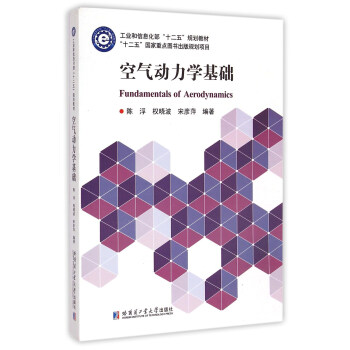
![线性模型和广义线性模型(第3版) [Linear Models and Generalizations 3rd Edition] pdf epub mobi 电子书 下载](https://pic.tinynews.org/11673411/552487a6Nbd634027.jpg)
![细胞生物学(第3版 供8年制及7年制“5+3”一体化临床医学等专业用) [Cell Biology] pdf epub mobi 电子书 下载](https://pic.tinynews.org/11719838/55a858f7Nd4678780.jpg)
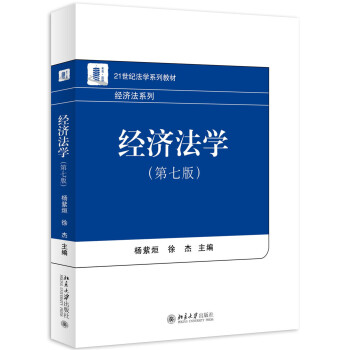
![贝叶斯统计学及其应用 [Bayesian Statistics and Its Applications] pdf epub mobi 电子书 下载](https://pic.tinynews.org/11749722/55dae99aN51390b07.jpg)
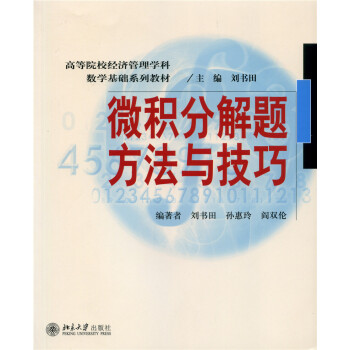
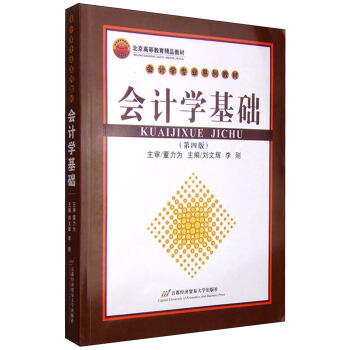
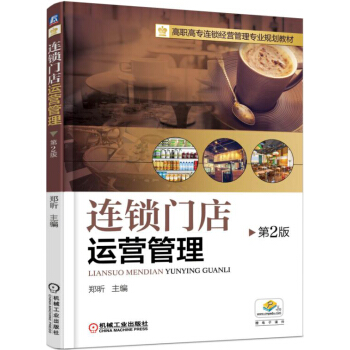
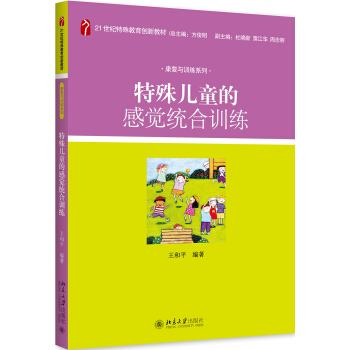
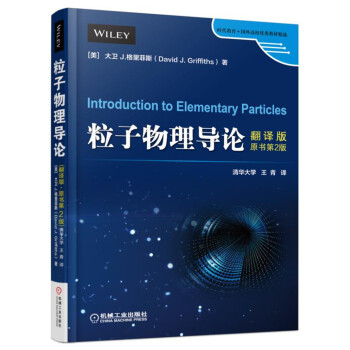
![物理学名家名作译丛:材料的透射电子显微学与衍射学 [Transmission Electron Microscopy and Diffractometry of Materials] pdf epub mobi 电子书 下载](https://pic.tinynews.org/12163942/58f5dcd0N161baa33.jpg)

